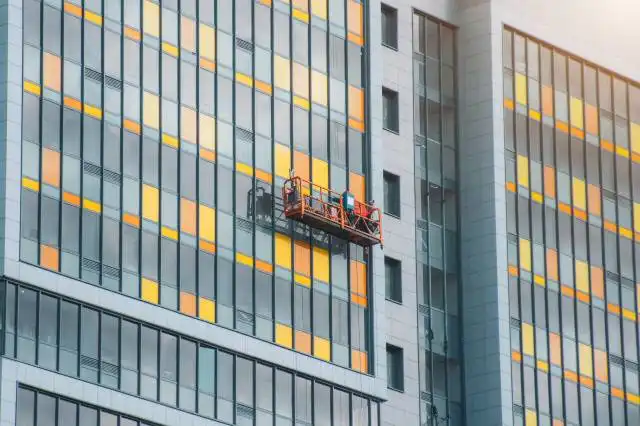Start a Drone Photography Business
Turn your Sky-High Dreams into Reality: Launching your Drone Photography Venture
| Updated


DRONE PHOTOGRAPHY BUSINESS
Up, up, and away with your very own Drone Photography Business, where the sky isn't the limit; it's your playground! Imagine this: Capturing breath-taking aerial photos and videos that once could only be fantasized. Your business would be offering a unique bird's-eye view for real estate, events, film, and more. Be prepared to watch your creativity (and your drones) soar in this thrilling entrepreneurial endeavor!
Jump to Business Plan
RELATED BUSINESS IDEAS
Browse ALL Design & Creative Enterprises Business Ideas
Discover Your Perfect Domain
Unlock the door to your online success with our hand-picked selection of premium domain names. Whether you're starting a new venture or rebranding an existing one, the right domain can set the tone for your digital presence. Browse through our curated list, each with its unique potential to enhance your brand's visibility and credibility.
DRONE PHOTOGRAPHY MINI BUSINESS PLAN
This a quick reality check to help you identify the strengths and weaknesses of your business concept before you dive in.
Expected Percent Margin:
- Gross Margin: 60-70%
- Net Profit Margin: 25-35%
Earnings Expectations:
- Daily Earnings: $300 - $600
- Weekly Earnings: $1,500 - $3,000
- Monthly Earnings: $6,000 - $12,000
- Annual Earnings: $72,000 - $144,000
Actions to Hit Those Numbers:
Equipment and Training:
- Initial Investment: At least $10,000-$20,000 for drone equipment and certifications.
- Licensing Requirements: Obtain necessary FAA licenses and drone operating training.
Marketing and Customer Acquisition:
- Website and SEO: Develop a professional website with strong SEO optimizations.
- Social Media Marketing: Use platforms such as Instagram to showcase drone photography and attract potential customers.
Service Offerings and Pricing:
- Diversify your Offerings: Offer different services such as aerial photography for real estate, weddings, outdoor events, and nature shots.
- Pricing Strategy: Establish competitive prices but ensure they cover your costs and desired profit margins.
Cost Control:
- Insurance: Budget for drone insurance to protect yourself from liability and equipment damage.
- Maintenance: Regular maintenance of equipment is crucial to prolong their lifespan and avoid costly repairs.
Business Operations:
- Networking: Network with local events planners, real estate agents, and wedding planners to land consistent gigs.
- Package Deals: Offer package deals to attract large-scale and long-term projects.
Always remember that success in a drone photography business will require not only great drone operating skills but also strong business management abilities. It is recommended to have both skills or partner with someone who does.
NOT WHAT YOU HAD IN MIND? Here are more ideas



Browse ALL Design & Creative Enterprises Business Ideas
Grab Your Business Website Name
Before you get caught up in the whirlwind of setting up your business, invest in a domain name. It's a small but significant step that lays the foundation for your brand and makes it easier for customers to find and trust you. Just like you wouldn't build a house without securing the land first, don't build a business without securing your domain name.
"Why? Can't that wait?" Here's why it shouldn't
Determine if the Business is Right Endeavor
Breakdown of Startup Expenses
Before starting a drone photography business, it is important to understand the associated costs. Some of the startup expenses include the cost of the drone itself, which can range from a few hundred to a few thousand dollars. Additionally, you will need to purchase a camera and other equipment, such as a remote controller, extra batteries, and a carrying case. You may also need to purchase insurance for your drone and equipment. Finally, you will need to factor in the cost of marketing and advertising your business.
Breakdown of Ongoing Expenses
In addition to the startup costs, there are also ongoing expenses associated with running a drone photography business. These expenses include the cost of maintaining and repairing the drone, as well as the cost of replacing parts and batteries. Additionally, you will need to pay for software and other tools to help you manage your business. Finally, you will need to factor in the cost of marketing and advertising to keep your business visible.
Examples on Ways to Make Money
Once you have established your drone photography business, you will need to find ways to make money. One way to make money is to offer services such as aerial photography, videography, and mapping. You can also offer services such as real estate photography, construction photography, and event photography. Additionally, you can sell your photos and videos online or through stock photo sites. Finally, you can offer drone training and consulting services.
Name the Business
Tips on How to Do So
Naming your drone photography business is an important step in the process. It is important to choose a name that is unique and memorable. Additionally, it should be easy to pronounce and spell. You may also want to consider using keywords related to drone photography in your business name. Finally, make sure to check if the name is available as a domain name and social media handle.
Step 1: Determine if the Business is Right for You
Breakdown of Startup Expenses
Starting a drone photography business requires a significant investment in the right equipment. This includes the drone itself, a camera, spare parts, and any other accessories you may need. Additionally, you will need to factor in the cost of any necessary licenses or permits, as well as insurance to protect your business and equipment. It is important to research the costs associated with each of these items before making any purchases.
Breakdown of Ongoing Expenses
Once you have the necessary equipment, there are still ongoing costs to consider. These include the cost of maintenance and repair, as well as the cost of any additional accessories you may need. Additionally, you will need to factor in the cost of any necessary software or subscriptions, as well as the cost of any marketing materials you may need to promote your business.
Examples of Ways to Make Money
There are a number of ways to make money with a drone photography business. You can offer services such as aerial photography, video production, and real estate photography. You can also offer services such as inspections, surveying, and mapping. Additionally, you can offer your services to businesses or individuals who need aerial footage for marketing or promotional purposes.
Step 2: Name the Business
Brainstorm When it comes to naming your business, brainstorming is a great place to start. Think of words that are related to drones and photography, and come up with a list of potential names. Consider what message you want to convey with the name, and make sure it’s easy to remember.
Research Once you have a list of potential names, research them to make sure they’re available. Check to see if the domain name is available, and make sure the name isn’t already taken by another company.
Test It Out Once you’ve narrowed down your list to a few potential names, test them out. Ask friends and family for their opinion, and see if the name resonates with them.
Get Feedback Once you’ve settled on a name, get feedback from potential customers. Ask them what they think of the name, and if they think it’s memorable.
Make It Official Once you’ve chosen a name and gotten feedback, it’s time to make it official. Register the business name with the state, and make sure you have all the necessary paperwork in order.
Step 3: Obtain Necessary Licenses and Permits
Before you can legally operate a drone photography business, you must obtain the necessary licenses and permits. Depending on the country, state, and city you are operating in, the requirements may vary. Generally, you will need to obtain a business license, a drone operator license, and a permit to fly a drone. Additionally, you may need to register your drone with the Federal Aviation Administration (FAA) and obtain a Certificate of Waiver or Authorization (COA) from the FAA.
It is important to research the specific requirements for your area before you begin operating. You can find the necessary information on the FAA’s website or by contacting your local government. Additionally, you may need to obtain insurance to cover any potential damages or injuries caused by your drone.
Once you have obtained the necessary licenses and permits, you will need to keep them up to date. This may require you to renew your licenses and permits annually or bi-annually. Additionally, you may need to pay a fee to keep them active.
Finally, you will need to make sure that you are in compliance with all applicable laws and regulations. This includes any local, state, and federal laws and regulations related to drone operations. It is important to stay up to date with any changes to the laws and regulations in order to remain compliant.
Step 4: Purchase Equipment
When starting a drone photography business, the fourth step is to purchase the necessary equipment. This includes the drone itself, as well as any additional accessories. Depending on the type of photography the business is focusing on, the equipment needed may vary. For example, a business specializing in aerial photography may need a more advanced drone than one specializing in landscape photography. Additionally, the business should consider purchasing a camera, lenses, and other accessories that will help them capture the best images. It is important to research the different types of drones and accessories available to ensure the best quality images are produced. Furthermore, the business should also consider investing in a drone insurance policy to protect their equipment from any potential damage.
Step 5: Market Your Business
Once you have your business set up, you will need to start marketing it. You can do this through a variety of methods, such as creating a website, using social media, and attending trade shows. You should also consider creating a portfolio of your work to show potential clients. Additionally, you should consider creating promotional materials such as flyers and brochures. You can also look into advertising in local newspapers and magazines. Finally, you should consider joining local photography clubs and associations to network with other photographers and potential clients. This will help you to get your name out there and build your reputation as a drone photographer.
Step 6: Create a Website
Creating a website is an essential part of starting a drone photography business. A website will provide potential customers with a way to view your portfolio and contact you for services. It is important to create a website that is professional and easy to navigate. Additionally, the website should include a blog section to inform potential customers about the services you offer and to provide them with helpful tips and advice.
When creating a website, it is important to choose a domain name that is easy to remember and reflects the services you offer. Additionally, it is important to choose a web hosting provider that is reliable and secure. It is also important to choose a website design that is modern and visually appealing. Finally, it is important to optimize the website for search engines so that potential customers can easily find it.
Step 7: Network with Other Drone Photographers
Networking with other drone photographers is a great way to learn the ropes of the industry and build relationships with other professionals. It is also a great way to get referrals and build your business. There are several ways to network with other drone photographers. You can join a local drone photography group or attend a drone photography conference. You can also join online forums and social media groups dedicated to drone photography. Additionally, you can reach out to other drone photographers and ask to collaborate on projects. This will help you gain experience and build your portfolio.
Step 8: Market Your Business
Once you have your business set up, it is time to start marketing it. The best way to market your business is to create a website and social media accounts. You can use these platforms to showcase your work, share tips and advice, and promote your services. Additionally, you can create promotional materials such as flyers, business cards, and brochures. You can also reach out to local media outlets and ask them to feature your business. Additionally, you can attend local events and conferences to network and promote your business.
Step 9: Stay Up-to-Date with Technology
As a drone photographer, it is important to stay up-to-date with the latest technology. This includes keeping up with new drones, cameras, and software. You should also stay informed about any new regulations or laws that may affect your business. Additionally, you should attend workshops and seminars to stay up-to-date on the latest trends and techniques. This will help you stay ahead of the competition and provide the best services to your clients. Finally, you should also join online communities and forums to stay connected with other drone photographers and learn from their experiences.
Step 8: Develop a Pricing Strategy
Developing a pricing strategy is essential for any business, and drone photography is no exception. It’s important to consider the cost of equipment, labor, and other overhead costs when determining pricing. Additionally, it’s important to consider the market rate for drone photography services. Researching what other photographers in the area are charging can help you set competitive prices. It’s also important to consider the value of your services and set prices accordingly. You don’t want to undervalue your services, but you also don’t want to price yourself out of the market. Additionally, consider offering discounts or packages to encourage customers to book multiple services. Finally, consider offering a variety of payment options, such as cash, credit, and PayPal, to make it easier for customers to pay.
Step 9: Stay Up to Date with Technology
The ninth and final step to starting a drone photography business is to stay up to date with technology. As technology advances, so does the drone photography industry. It is important to stay informed of the latest trends and advancements in the industry. This can be done by reading industry magazines, attending trade shows, and networking with other professionals in the field. Additionally, keeping up with the latest software and hardware updates is essential to staying competitive. Investing in the latest drone models and accessories can help ensure that your business is able to provide the best quality services to clients. Utilizing the latest technology can also help you stand out from the competition and attract more customers. Finally, staying up to date with the latest technology can help you stay ahead of the competition and ensure that your business remains profitable.
EXPLORE MORE CATEGORIES
Browse ALL Business Idea Categories
TAKE THE NEXT STEPS










